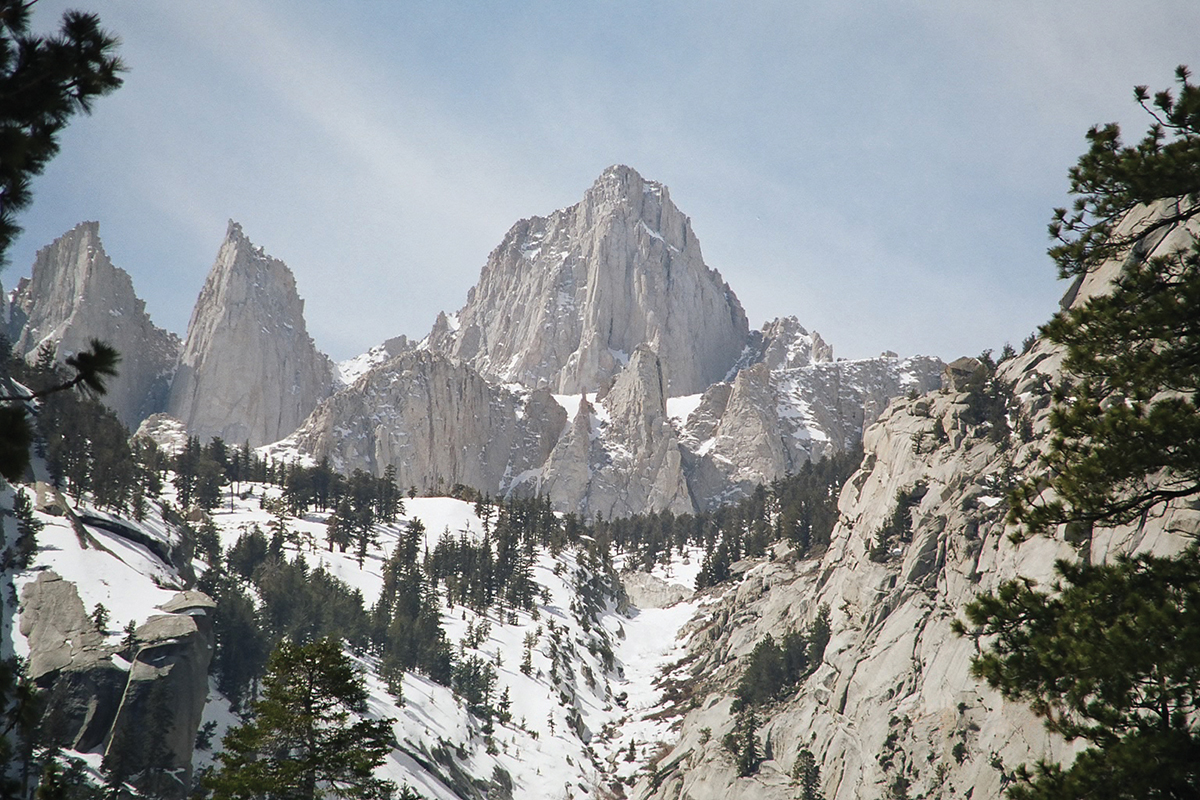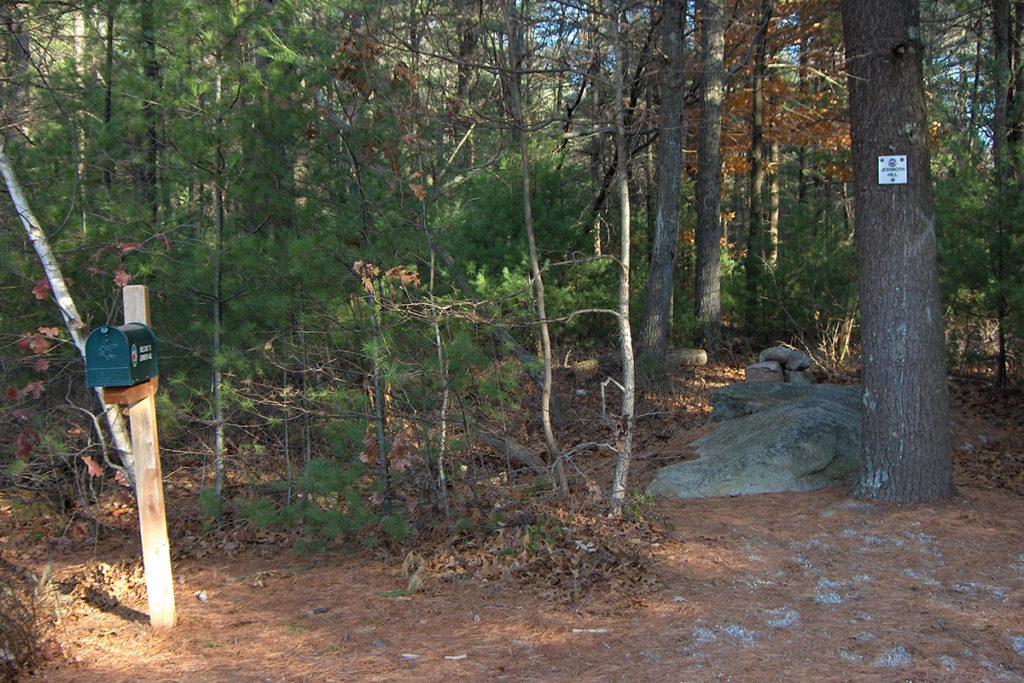For many ancient civilizations, mountains were considered the realm of divine beings. For countless people today, summits stand as symbols of individual freedom and sources of human inspiration. Mountains also contribute a multitude of tangible benefits, such as providing freshwater and boosting biodiversity.
Today, as more people venture out to explore mountainous landscapes, the popularity of visiting a highpoint—the highest point in a given county, state, or other geographic area—has grown as well. Many of these sites lie within public lands, including rock-and-ice summits found in national parks. Others, especially in the East, are found on private lands. In fact, of the 50 state highpoints across the country, one-fifth are found on private property. Over recent years, various private and voluntary solutions have emerged to help ensure access to these special places for future generations.
The Highpointers Foundation is one group working to preserve access to these lofty places. Established by mountaineers and other explorers, the nonprofit aims to help conserve and care for highpoints while also educating people about them. The organization also strives to “maintain positive relationships with owners of highpoints on private property” and “support public and private efforts to maintain the integrity of and safe access to state highpoints.” The foundation has raised and spent more than $120,000 on amenities at 31 highpoints and an exhibit at the American Mountaineering Center in Golden, Colorado.
Of the 50 state highpoints across the country, one-fifth are found on private property. Over recent years, various private and voluntary solutions have emerged to help ensure access to these special places for future generations.
The foundation emerged 13 years ago out of the Highpointers Club, a voluntary group of several thousand people who visit the summits. “It is an activity and a Club that brings together people from all walks of life,” notes an entry at the mountaineering website SummitPost, “making it quite an interesting group.” Some points can be reached by motor vehicle and a short walk, while others are major mountains that require specialized equipment and training to conquer. The group’s newsletter, Apex to Zenith, features stories about completers—people who have reached the rarified air of every state highpoint in the country. As a 2018 Backpacker story by Loren Mooney noted, more people have climbed Mt. Everest than have reached every U.S. highpoint.
Club founder Jack Longacre was often asked what proof summitters need to prove they have been to a highpoint. “We do not require any ‘proof’ of climbing any of the highpoints,” he replied. “It is entirely by the honor system. It is my consensus that outdoor type people are almost 100 percent purists and are possessors of very high personal standards.” More to the point, he noted that technical highpoints are group efforts that necessarily entail witnesses. “So why would you miss the fun of doing the other H.P.s?” In a nod to practicality, Longacre also recommended taking a picture of each summit.
The first 48-state completer was A.H. Marshall. The “wiry railroad telegraph operator,” as Mooney described him, had no blueprint to follow:
He first had to create a highpoints list—nobody had compiled one before—which required meticulous research of conflicting sources and writing letters to dozens of Forest Service officials for different maps and advice. As a perk of his telegraph job, he got free railroad travel. So over several summers, he traveled by rail, hitchhiking, and foot—ticking off highpoints as fast as a modern-day peakbagger with the benefit of a rental car …
Marshall nabbed his last highpoint in 1936. Three decades later, Vin Hoeman became the first person to reach all 50. While the pursuit may remain niche, the enthusiasm of its adherents is undeniable. “Some of the world’s most passionate athletes are high pointers,” Peter Frick-Wright has written in Outside, “climbers who will do anything to reach the tallest point in every state, county, or whatever other designation they can dream up.”
Highpointers pride themselves on their love of geography and orienteering. In his 1970 booklet Highpoints of the States, Frank Ashley described Oklahoma’s Black Mesa as one of the largest and most isolated mesas in the world: “For years [the] area was outlaw hideout—’no man’s land’—due to the fact that no state or territory claimed [the] area.” Despite its remoteness, the foundation raised funds to place a granite bench at the trailhead, one of 30 benches it has placed at state highpoints.
The Highpointers Foundation’s greatest achievement is perhaps maintaining public access to all 50 state highpoints. Forty highpoints are on land controlled by federal, state, or county governments. Alaska’s Denali, the highest mountain in the country at 20,310 feet, is in Denali National Park and Preserve. California’s Mount Whitney (14,505 feet), the highest point in the lower 48, is in the Inyo National Forest. Across the country and at the other end of the spectrum, Delaware’s highpoint, Ebright Azimuth (448 feet), is near a public sidewalk. Florida’s Britton Hill—at 345 feet, the lowest U.S. highpoint—is a county park.
A few of the points found on public land have passed to authorities through the generosity of private landowners. Iowa’s Hawkeye Point (1,670 feet) is one example. In Fifty State Summits, surveyor Paul Zumwalt explains that a U.S. Geological Survey crew located the highest point in Iowa behind a barn owned by the Sterlers, a farming family. In 2008, the family donated the land to Osceola County to become a park, and the local community embraced the project. The foundation built a campground at the site and made renovations, including an observation platform constructed around a corn silo and an informational kiosk that featured various state license plates sent to the Sterler family by visitors. “That’s the best example of a community getting behind a highpoint,” foundation president Dave Covill said of the project.
The Highpointers Foundation and their allies have preserved public access through private diplomacy and problem solving informed by conservation values.
The remaining 10 highpoints are on private property. In these states, the Highpointers Foundation and their allies have preserved public access through private diplomacy and problem solving informed by conservation values. A multi-year access controversy at Rhode Island’s Jerimoth Hill (812 feet) inspired highpointers to focus on the issue. In his highpoints book, Ashley wrote of the site: “Owner of property welcomes all visitors with open arms.” Yet a subsequent owner grew impatient with the stream of visitors to the property, as then-Highpointers Club chairman Roger Rowlett told NPR’s “All Things Considered” in a 2005 interview: “The property owner who was there had people that were visiting him at—during all points of the day and night. And he didn’t like people coming across his private property. … So he’d blocked access to it.” The club worked with the landowner, Rowlett explained, to negotiate access on particular days and keep the site open to the public. From being one of the most restrictive state highpoints, Jerimoth Hill became an example of how private individuals could work to keep access.
The Highpointers Foundation has played an influential role working with property owners in other states. Foundation president Covill called signing a perpetual-access easement with North Dakota ranchers in 2018 “by far our most important project.” The agreement, which keeps White Butte (3,506 feet) open to the public, “took cooperation with surveyors, attorneys, the county—and of course the ranchers, whose idea it was.” In Nebraska, the private landowners of Panorama Point (5,429 feet) had asked visitors not to stray from the weather-battered road leading to the site. The foundation provided funding for gravel to fill low spots and repair the dirt lane.
The group has also helped purchase signage directing visitors to highpoints on private land in Indiana (Hoosier Highpoint, 1,257 feet), Louisiana (Driskill Mountain, 535 feet), and Maryland (Backbone Mountain, 3,360 feet). And in Michigan, it helped improve the visitor experience at Mount Arvon (1,979 feet), which is on land owned by a paper company. While serving in the state legislature in the 1990s, I helped secure an easement to the remote summit. The foundation later placed a bench at an overlook just below the point, where trees were cleared to allow visitors to see Lake Superior clearly.
In all, the Highpointers Foundation has funded 14 registers, nine plaques, three tower restorations, two kiosks, a summit boulder, a picnic table, maps, and 9/11 posters that were donated to the U.S. Forest Service. The latter featured a Highpointers Club member on each summit with their state flag.
At a time when private solutions to conservation issues are often overlooked, these mountaintop enthusiasts demonstrate how voluntary and grassroots efforts can provide wider benefits that can be enjoyed by anyone. Thanks largely to the Highpointers Foundation, access to America’s highest corners remains open to all.





